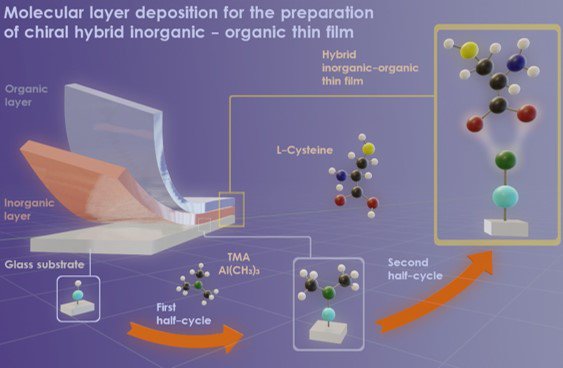FUNCTIONAL THIN FILMS
 Atomic/Molecular layer deposition (ALD/MLD) are based on the use of hetero- and homo-bifunctional organic or metal-organic compounds that vaporize, chemisorb onto and react with an appropriately functionalized surface. Both ALD and MLD allow temporal separation of any number of precursors, each of which produces self-limiting adsorption/reaction on the surface so that typical uptake is limited to ~one monolayer of any given precursor. This leads to growth controlled at the monolayer level and self-limiting reactions that have shown extreme conformality, even into ultra-high-aspect-ratio and porous substrates.
In this research thrust, we demonstrate a remarkable progress in MLD/ALD into a new horizon of surface treatment, and address a question with both fundamental and applicative significance: can we grow molecularly thin films from the vapor phase, which maintain a desirable chemical property originated from the source precursor. This question can be exemplified by a variety of chemical properties, such as MLD of enantioselective thin films from chiral building blocks (e.g. volatile amino acids, thin film deposition of molecular traps, and more).
Atomic/Molecular layer deposition (ALD/MLD) are based on the use of hetero- and homo-bifunctional organic or metal-organic compounds that vaporize, chemisorb onto and react with an appropriately functionalized surface. Both ALD and MLD allow temporal separation of any number of precursors, each of which produces self-limiting adsorption/reaction on the surface so that typical uptake is limited to ~one monolayer of any given precursor. This leads to growth controlled at the monolayer level and self-limiting reactions that have shown extreme conformality, even into ultra-high-aspect-ratio and porous substrates.
In this research thrust, we demonstrate a remarkable progress in MLD/ALD into a new horizon of surface treatment, and address a question with both fundamental and applicative significance: can we grow molecularly thin films from the vapor phase, which maintain a desirable chemical property originated from the source precursor. This question can be exemplified by a variety of chemical properties, such as MLD of enantioselective thin films from chiral building blocks (e.g. volatile amino acids, thin film deposition of molecular traps, and more).

 © Copyright Noked Lab, all Right Reserved
© Copyright Noked Lab, all Right Reserved